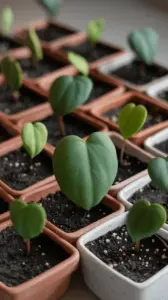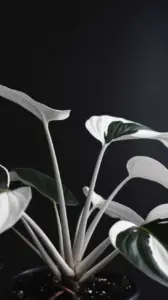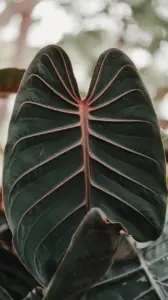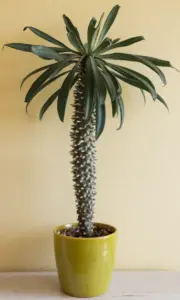Biological Features of Hoya Caudata
The Hoya Caudata is a stunning epiphytic plant belonging to the Apocynaceae family. It features oval, textured leaves that can grow up to 10 cm long. This plant produces clusters of star-shaped flowers that exude a sweet fragrance, attracting various pollinators. Hoya Caudata requires bright, indirect light to thrive. Thus, it’s ideal for indoor environments.
Leaf Structure
The leaves are thick and waxy, which helps retain moisture. They are often dark green, sometimes featuring a slight silver or white speckling. This adaptation is crucial for the plant’s survival in humid conditions. Furthermore, the leaf texture can vary between individuals, making each plant unique.
Flowering Characteristics
During blooming, Hoya Caudata surprises with its beautiful clusters of flowers. Each flower opens slowly and lasts several days. They usually appear in cycles, often during warmer months. The flowers have a unique structure, with a central corona surrounded by five petals. This design is vital for attracting specific pollinators like bees.
Growth Requirements
To support healthy growth, Hoya Caudata prefers well-draining soil and regular watering. It is essential to let the soil dry between watering sessions. Additionally, this plant benefits from occasional fertilization with diluted plant food during the growing season. Moreover, maintaining a high humidity level enhances its growth potential.
| Feature | Description |
|---|---|
| Family | Apocynaceae |
| Height | Up to 1 meter |
| Flower Color | White to pink |
| Light Requirement | Bright, indirect light |
| Watering | Allow soil to dry out |
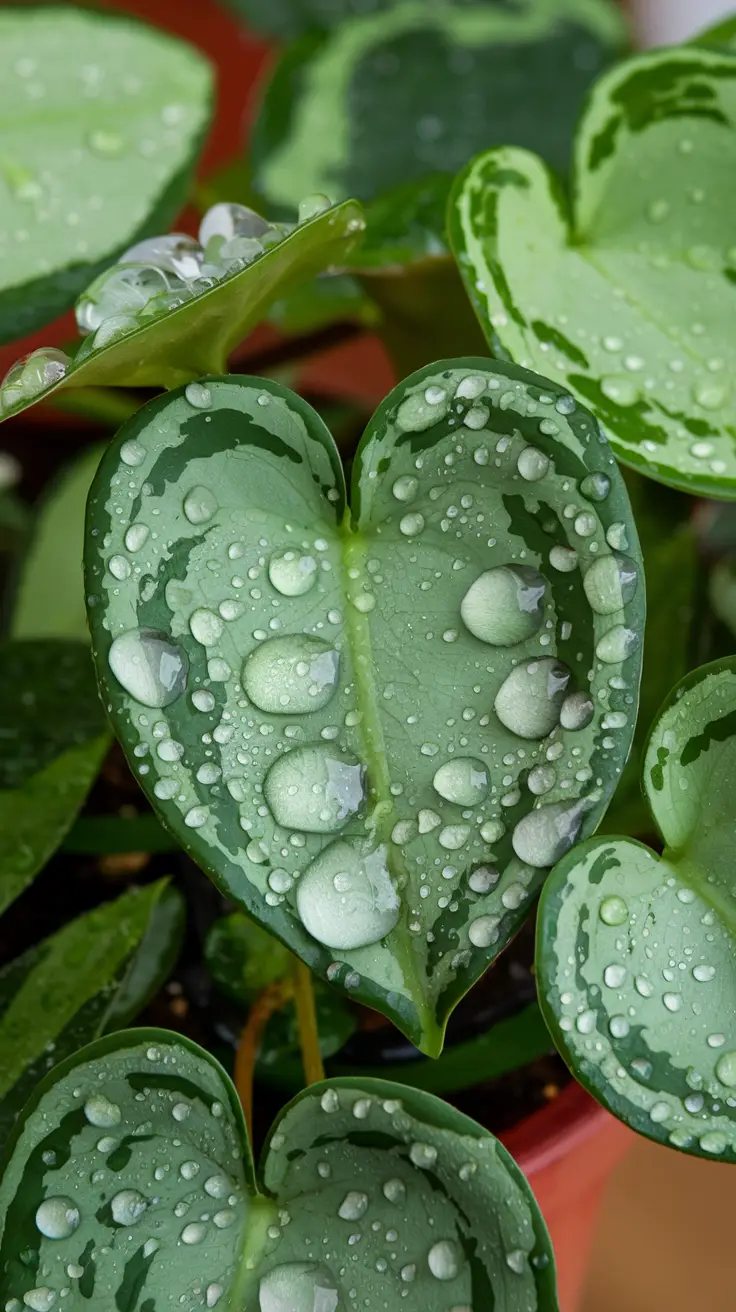
History and Cultural Significance
The Hoya Caudata is native to Southeast Asia, particularly found in countries like Malaysia and Indonesia. This plant has captivated plant enthusiasts due to its delightful waxy leaves and fragrant flowers. The history of this species stretches back centuries, deeply rooted in the cultures of the regions where it thrives.
Cultural Importance
In South Asian folklore, Hoya Caudata is often associated with love and prosperity. Many cultures believe that keeping this plant in their homes attracts good luck and positive energy. Additionally, it has been utilized in traditional medicine for its purported benefits, although scientific research is still ongoing.
Historical Background
The plant was first described by botanist William Jack in 1822. Over the years, gardening enthusiasts began to appreciate its beauty and unique characteristics, making it a popular choice for homes and gardens. As a tropical plant, Hoya Caudata flourishes in warm, humid environments.
Modern Cultivation
Today, Hoya Caudata is a cherished addition to many indoor plant collections. Many people grow it for its stunning flowers and simple care requirements. Its resilient nature allows it to adapt to various growing conditions, making it a favorite among both novice and expert gardeners.
- Native Region: Southeast Asia
- Cultural Beliefs: Symbol of love and prosperity
- First Described: 1822 by William Jack
- Modern popularity: Decorative houseplant with fragrant flowers
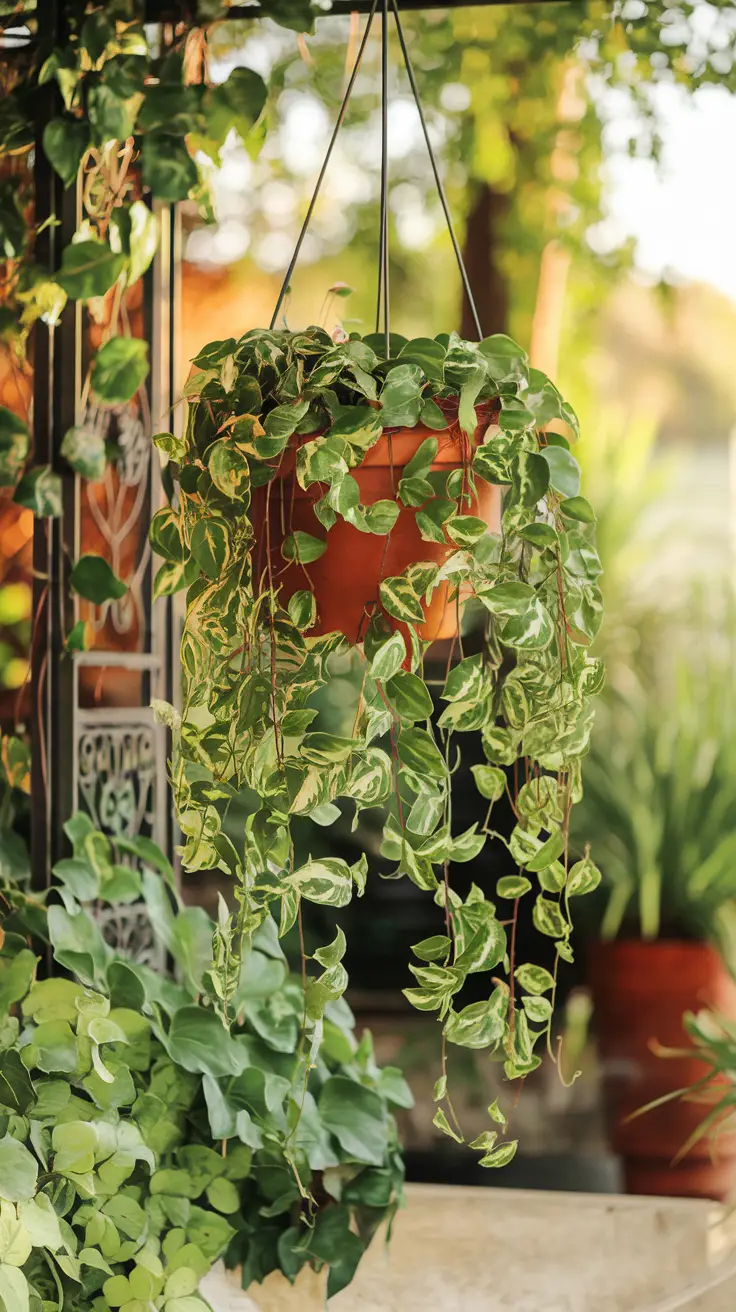
Ideal Growing Conditions for Hoya Caudata
Hoya Caudata is a beautiful, tropical plant that thrives in specific conditions. To ensure the best growth, consider its environmental needs. This plant prefers bright, indirect light. Direct sunlight can scorch its leaves, while low light may hinder its growth. Therefore, placing it near a window, but away from harsh rays, is ideal.
Temperature and Humidity
The best temperature range for Hoya Caudata is between 60°F to 80°F (15°C to 27°C). It is essential to keep the plant away from cold drafts, as they can harm its delicate leaves. Additionally, Hoya Caudata enjoys high humidity levels, ideally around 60% to 80%. You can achieve this by misting the plant regularly or using a humidity tray.
Soil and Watering Needs
When it comes to soil, Hoya Caudata prefers well-draining potting mix. A blend of peat, pine bark, and perlite works well. This combination provides the right moisture retention without waterlogging. As for watering, allow the top inch of the soil to dry out between waterings. Overwatering can lead to root rot, so always err on the side of caution.
Fertilizing Recommendations
During the growing season, typically spring and summer, feed Hoya Caudata with a balanced liquid fertilizer every four to six weeks. This will promote healthy growth and vibrant blooms. Most importantly, reduce fertilization in the fall and winter months when the plant’s growth slows.
| Condition | Optimal Level |
|---|---|
| Light | Bright, indirect |
| Temperature | 60°F to 80°F (15°C to 27°C) |
| Humidity | 60% to 80% |
| Soil type | Well-draining mix |
By following these guidelines, you’ll create the perfect environment for your Hoya Caudata to flourish. Paying attention to its unique needs ensures a healthy and thriving plant.
Plant Care and Maintenance
Hoya Caudata, often referred to as the wax plant, thrives best with proper care. To maintain its health, you’ll need to carefully consider light, watering, and soil. Hoya Caudata prefers bright, indirect light. However, too much direct sunlight can scorch its leaves. Aim for a spot that receives filtered sunlight for optimal growth.
Watering Needs
Regular watering is essential, but overwatering can lead to root rot. Allow the top inch of soil to dry out before watering again. This balance will help your Hoya Caudata flourish. During the growing season, water more frequently, as the plant is actively absorbing nutrients. Conversely, reduce watering during the winter months.
Soil Requirements
Your Hoya Caudata requires well-draining soil. A suitable mix includes potting soil, perlite, and orchid bark. This combination encourages healthy root development. Avoid heavy soils that retain excess moisture, which can be detrimental to the plant’s roots.
Humidity and Temperature
This plant enjoys a humid environment. Ideally, humidity levels should be above 50%. If your home is dry, consider using a humidity tray or a humidifier. Hoya Caudata also prefers warmer temperatures. Aim for a range of 60°F to 80°F (16°C to 27°C).
Fertilization Tips
Fertilizing is an integral part of keeping your Hoya Caudata healthy. Use a balanced liquid fertilizer every month during the growing season. Dilute it to half the recommended strength to avoid over-fertilization. During the fall and winter, you can cut back on fertilizing.
Pruning and Propagation
Regular pruning helps maintain the shape of your Hoya Caudata. Remove any dead or yellowing leaves to encourage new growth. You can propagate this plant easily through stem cuttings. Cut a healthy stem with at least two leaves, and place it in water or directly into soil.
Common Pests
Monitor your Hoya Caudata for pests such as aphids, spider mites, or mealybugs. If you spot any, treat them quickly with insecticidal soap. Regularly checking your plant helps in early detection of any issues.
- Provide bright, indirect light.
- Allow soil to dry between waterings.
- Use a well-draining soil mix.
- Aim for higher humidity levels.
- Fertilize during the growing season.
- Prune for better shape and health.
- Check for pests regularly.
With attentive care, your Hoya Caudata can thrive and add beauty to your indoor space.
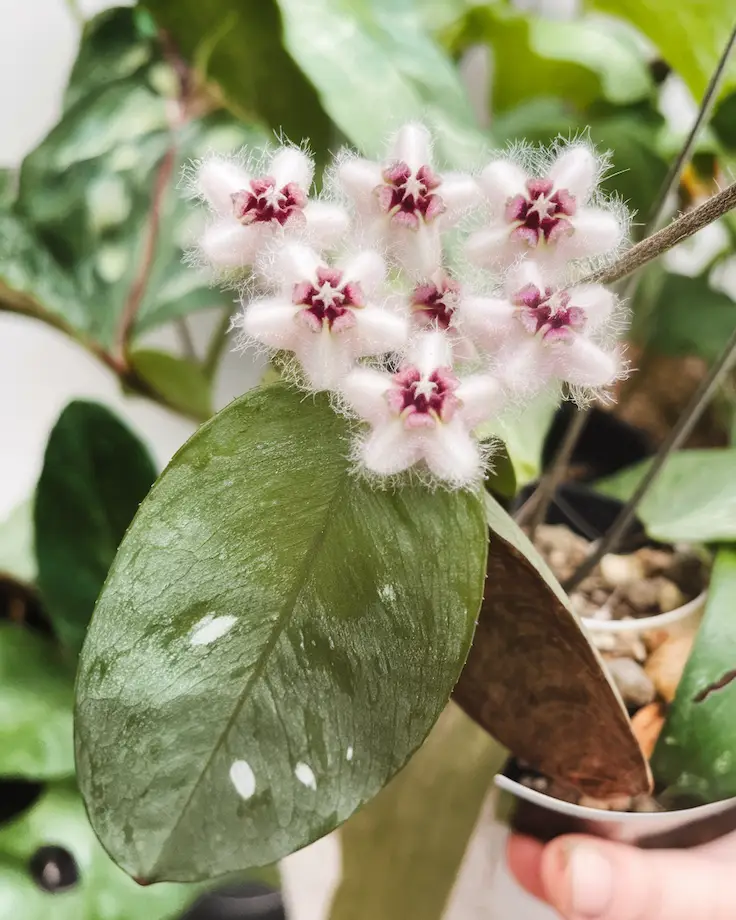
Propagation Techniques for Hoya Caudata
Propagating Hoya Caudata can be both rewarding and simple. The most common method is through stem cuttings. First, select a healthy stem that has at least two or three leaf nodes. Using a clean, sharp cutting tool, make a cut just below a node. This helps in promoting root growth.
Soil and Water Requirements
After cutting, let the stem sit for a few hours to callous over. This helps prevent rot when you place it in the soil. Choose a well-draining potting mix, as Hoya Caudata prefers to avoid soggy roots. A mixture of potting soil and perlite often works well.
Next, either plant the cutting directly in the soil or place it in water. If using water, ensure the nodes are submerged but the leaves are dry. Change the water every few days to keep it fresh. After a few weeks, you should see roots forming.
Transplanting Your Cutting
Once the roots are about 2 inches long, it’s time to transplant the cutting into soil if you started in water. Make a hole in the soil and gently place the cutting in. Water it lightly to settle the soil around the roots. Ensure the pot has drainage holes to prevent overwatering.
During the growth period, provide bright, indirect light to encourage healthy growth. Over time, your Hoya Caudata will begin to thrive and can even flower under the right conditions. Keep an eye on moisture levels, as this plant does not like extremes.
In summary, propagate Hoya Caudata through stem cuttings. Use well-draining soil and ensure good lighting conditions for best results. With patience and care, you’ll enjoy watching your plant flourish.
Common Problems and Solutions
Hoya Caudata is a beloved houseplant. Despite its resilience, it can face several challenges. Understanding these common problems can ensure your Hoya flourishes. Here are typical issues to watch for:
1. Yellowing Leaves
Yellowing leaves can indicate overwatering or poor drainage. Adjust your watering schedule. Ensure that excess water can escape from the pot. This helps prevent root rot, a frequent problem with Hoya Caudata.
2. Leaf Drop
If the leaves start dropping, check the environment. A sudden change in temperature can stress the plant. Ensure the Hoya is not placed near drafts or heating vents. Additionally, ensure it has adequate humidity levels.
3. Poor Growth
Poor growth is often related to insufficient light. Hoya Caudata prefers bright, indirect sunlight. Move it closer to a light source if it appears leggy. Fertilizing during the growing season can also promote better growth.
4. Pest Infestation
Common pests include aphids and spider mites. Regularly inspect your plant for any signs of pests. If spotted, treat the affected areas with insecticidal soap. Additionally, maintaining humidity can help deter these pests.
5. Leaf Spots or Mold
Leaf spots can result from fungal infections or waterlogged soil. Allow the topsoil to dry between waterings. Use a diluted fungicide if you notice spots spreading. Fungus thrives in damp conditions, so controlling moisture is crucial.
- Ensure well-draining soil compositions.
- Provide adequate lighting for optimal growth.
- Regularly inspect for pests and treat promptly.
- Adjust watering habits based on seasonal changes.
| Problem | Solution |
|---|---|
| Yellowing Leaves | Reduce watering, improve drainage. |
| Leaf Drop | Check environment, avoid drafts. |
| Poor Growth | Increase light exposure, fertilize. |
| Pest Infestation | Inspect regularly, use insecticidal soap. |
| Leaf Spots | Allow soil to dry, use fungicide. |
By being aware of these common problems and implementing solutions, your Hoya Caudata can thrive. Regular care and attention will promote its health and beauty, ensuring it remains a stunning addition to your plant collection.
Seasonal Care Adjustments
Adjusting care for your Hoya Caudata throughout the seasons is essential. Each season introduces different environmental conditions that affect growth. During spring and summer, increase watering frequency as the plant grows actively. Conversely, reduce watering in fall and winter. Here are some essential tips:
- In spring, fertilize monthly with a balanced fertilizer to promote growth.
- Provide bright, indirect light to enhance blooming during summer.
- In fall, gradually decrease water as the plant enters dormancy.
- Protect from cold drafts in winter to ensure the plant remains healthy.
- Maintain humidity levels, especially during dry seasons, to keep the leaves lush.
These seasonal care adjustments help your Hoya Caudata thrive year-round. Pay attention to changes in your plant’s behavior and respond accordingly.
Microclimate Setup Tips
Creating the ideal microclimate for your Hoya Caudata is crucial. This plant thrives in specific conditions that mimic its natural environment. Here are some essential tips for setting up a suitable microclimate:
Temperature Control
Hoya Caudata prefers temperatures between 65°F to 80°F. Avoid placing it in drafty areas or near heating vents. Sudden temperature changes can stress the plant.
Humidity Levels
Humidity is vital for Hoya Caudata. Aim for levels between 60% to 80%. You can achieve this by:
- Using a humidifier nearby.
- Grouping plants together to create a moisture-rich environment.
- Placing a tray of water with pebbles under the plant pot.
Light Requirements
Bright, indirect light is best for Hoya Caudata. Direct sunlight can scorch the leaves. Therefore, consider placing the plant near a north or east-facing window.
Air Circulation
Good air circulation helps prevent mold and pests. Ensure the plant is not in a sealed, stagnant area. Gently moving air can greatly benefit the plant’s health.
Soil and Watering Needs
Use a well-draining potting mix to avoid root rot. Water the plant when the top inch of soil feels dry. Regular monitoring of moisture levels will help you gauge when to water.
Finally, maintain your Hoya Caudata’s microclimate. Regular assessments and adjustments ensure it remains healthy and vibrant.
Frequently Asked Questions
Hoya Caudata holds a special place among plant enthusiasts. This unique plant often raises questions regarding its care and maintenance. “What light conditions are ideal for Hoya Caudata?” is a common query. It thrives in bright, indirect sunlight. Alternatively, lower light can also be sufficient.
Another frequent question pertains to watering. Ensure you water infrequently; allow the soil to dry out between watering sessions. Overwatering can lead to root rot, which can harm the plant.
Fertilizing Hoya Caudata is another aspect to consider. Using a balanced liquid fertilizer during the growing season helps in maintaining its health. However, reduce feeding during winter months.
Lastly, many people ask, “How do I propagate Hoya Caudata?” The cuttings should be taken during spring or summer. Use a sharp, clean knife, and place the cuttings in soil or water.
Summary and Recommendations
The Hoya Caudata is a captivating houseplant admired for its stunning leaves and fragrant flowers. This plant thrives in moderate light and well-drained soil. It is highly recommended to allow the soil to dry out between waterings to prevent root rot. Additionally, Hoya Caudata prefers humidity, making it ideal for bathroom or kitchen environments.
For optimal growth, consider using a balanced fertilizer during the growing season. This will encourage vibrant foliage and abundant blooms. If you want to propagate this plant, cuttings in water or soil work very well. Ensure that you provide support for climbing, as it naturally tends to climb in its habitat.
Overall, Hoya Caudata is an excellent choice for plant enthusiasts. With the right care, this plant can flourish and bring beauty to your home.



